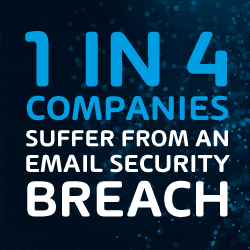Rogue One: A Star Wars Story came out in 2016, and it’s a backup and recovery movie. It’s set between Revenge of the Sith and A New Hope, the original Star Wars story. If you’ve never seen this movie, you may want to stop reading and go watch it. This post is 100% spoilers.
Rogue One Background
The story takes place as the Death Star construction is completed. Scientist Galen Erso was conscripted (against his will) into the Imperial think-thank known as the Tarkin Initiative. Erso was “the preeminent authority on (kyber) crystals and their use in supplying enhanced power”. He was the one in charge of “fusing crystal shards into larger forms, and the creation and redirection of a controlled chain reaction”(Wookieepedia). Why didn’t he quit, and refuse to help the Empire? He knew his boss, General Krennic would just find someone else to finish it. So instead, he used his skills to put a fatal weakness in the form of a reactor module.
Of course, we all know what happened next….it was as easy as bulls-eyeing womp rats from your T-16.
Galan’s daughter Jyn escaped as a small child and was raised by resistance fighter Saw Gerrera. Later she was imprisoned for numerous offenses but rescued by the Rebel Alliance to find Gerrara. This is because the Alliance knew Gerrara had captured a defected Imperial pilot who carried a message from Galan about the weakness in the Death Star. Here’s the official trailer:
This is all typical Star Wars universe stuff, so how is this a backup and recovery movie?
World-building projects create lots of data
Building a world-sized weapon is a huge project, and it creates a lot of data. In fact, Erso was counting on this fact to hide the hidden fatal flaw. He created a version of the plans that included the flaw, and he named the file “Stardust”.
It’s weird to think about the Star Wars Universe in a real-world context, but a construction effort of this magnitude must have had so much data to store! Architectural plans, employee records, testing results, manifests for materials and kyber crystals to arm the weapon. Did the Empire think about protecting that data?
A backup and recovery movie needs a massive backup robot!
It turns out they did! On Scarif, there was a SIX STORY HIGH data vault. It was in the Citadel Tower of the Imperial security complex. It was an engineering archive, and held “scientific treatises, bureaucratic memoranda, and schematics, including the plans to the Death Star” (per Wookieepedia).
When I saw the movie for the first time, I thought “that is the biggest backup robot I have ever seen”. The data vault was made of three towers, with lights showing the storage status of ten thousand data tapes. It did happen a long time ago in a galaxy far, far, away, so tapes make sense!
The Wookieepedia page for the Scarif Vault had a fact I didn’t put together when I re-watched the film to write this post: the vault was air-gapped. They say it was “cut off from the local computer network and could only be accessed by a right hand-print scanner”. Honestly, you could probably make the argument that Rogue One is an IT security movie.
Once the tape was located, it had to be extracted with handles. Remember that the file containing the vulnerability in the Death Star was named “Stardust”? That’s what Galen called Jyn when she was a little girl. So she was able to identify the correct file immediately. To find the tape with the file on it, they made a light blink on the actual media.
Recovery or disaster recovery?
Once Jyn recovered a copy of the plans, they had to get them to the Rebel Alliance. There was a dish on the top of the archive to send files out. Which I don’t understand since the entire archive was air-gapped. Jyn had to jump through a scary hatch to get to the dish.
Jyn is sending the plans to a separate location, which is a common disaster recovery activity. This is usually something you test on a regular basis, to make sure you have accounted for all the little things that may prevent successful failover.
For instance, once Jyn inserted the tape for transmission, she had to reset the antenna alignment. After that, the portal to the planet needed to be opened so that transmission could happen. In the case of our heroes, the Rebel Alliance fleet crashed the “firewall” with a couple of Imperial destroyers.
The transmission was completed just before the Death Star fired on the communications array. That explosion destroyed not only the complete data vault, but the entire planet. That means that the transmitted data is now the only copy of the plans for the Death Star. So this is not just a backup and recovery movie, it actually fits the most literal definition of disaster recovery.
Real Talk
Rogue One is one of my favorite Star Wars movies. It helped me make sense of the original trilogy and made me feel the way I did when I first watched them as a kid. It also reminded me of the times I spent managing backups, from dealing with a badly-behaved backup robot, to making servers blink so I could pull the right one, to crossing my fingers DNS worked when we failed over to the remote site during a real disaster situation.
What do you think – have I convinced you that Rogue One is a backup and recovery movie?









Trackbacks/Pingbacks